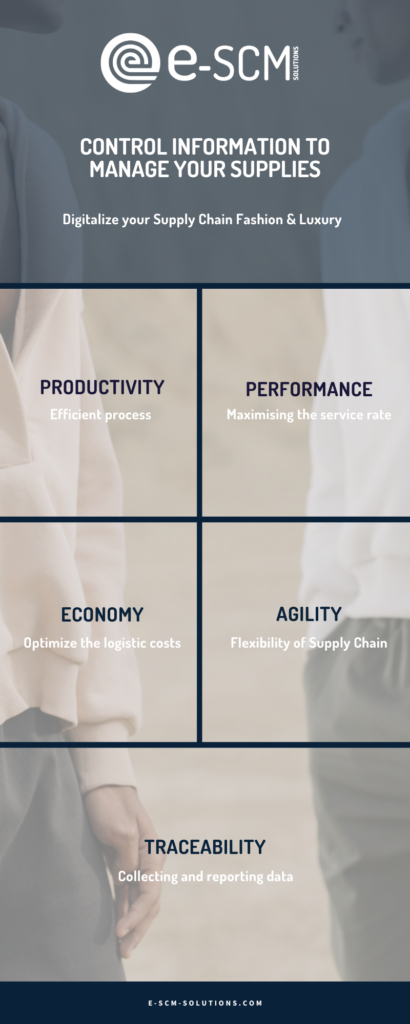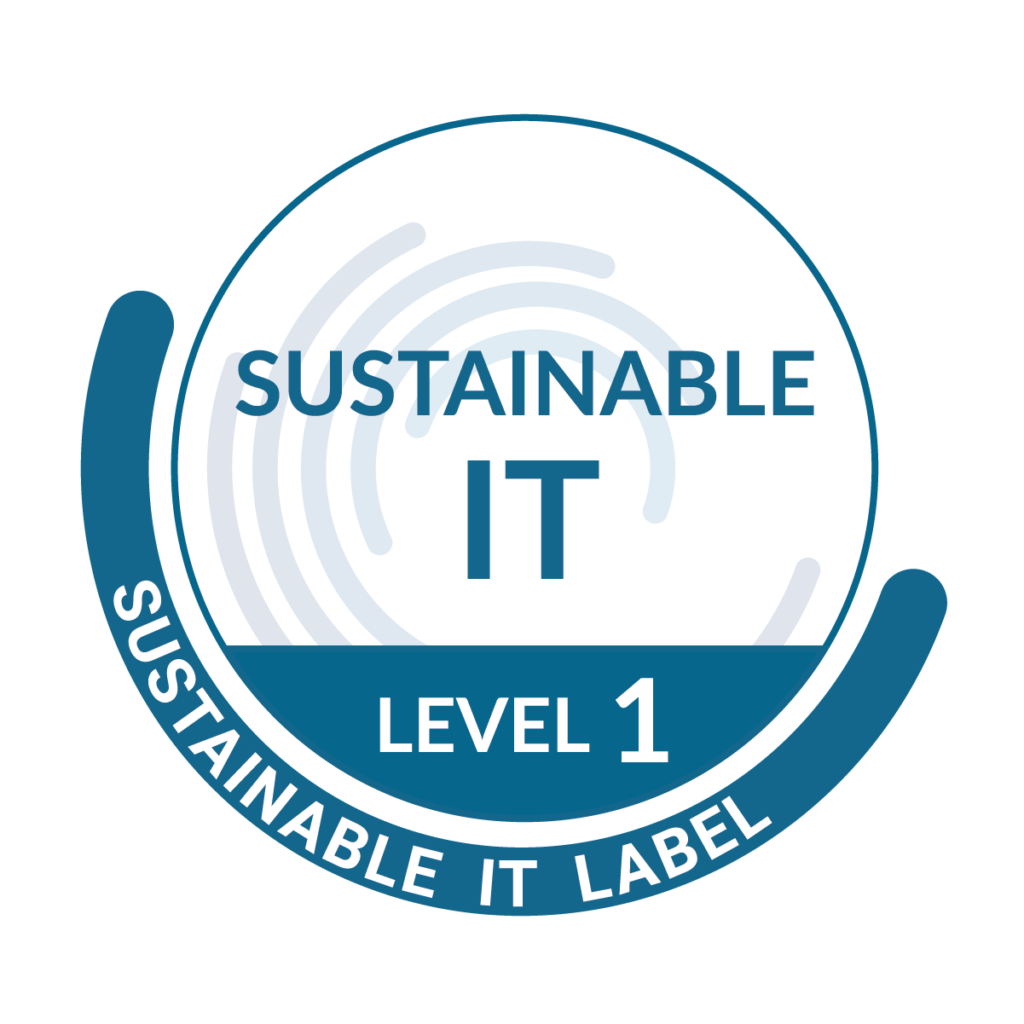In an era of relentless challenges, procurement processes are being forced to reinvent themselves to become more responsive, involving cultural evolution and a rapid transition to digital solutions. What benefits does digitalization of the supply chain offer in the fashion industry?
Supply chain actors still operate with siled data, still collected on paper or in non-standardized formats like Excel sheets, spending hours navigating through countless rows to adjust quantities or other variables . Many exchanges still take place by telephone or e-mail to transmit new information to suppliers.
The various crises have highlighted the importance of managing risks in the supply chain, requiring adaptability and overall visibility of the cycle and suppliers to avoid any disruption.
Today, digital supply chain management solutions exist to improve the performance of the value chain and increase its agility and responsiveness.
These innovative tools, shared throughout the supply chain, make it possible to monitor production performance indicators They anticipate disruptions, delays and problems identified in the production cycle. Thus, solutions can be deployed upstream to deal with production unforeseen events, thus avoiding disputes with suppliers.
Our e-SCM solution represents one of the innovative technological solutions that brands are adopting to manage supply flows.
Our platform centralizes exchanges and facilitates coordination between all players in the supply and production cycle, such as suppliers, logistics, freight forwarders, carriers and the quality department.
Two key aspects emerge to meet the “time to market” imperative and best meet consumer expectations:
· A collaborative dimension thanks to the implementation of workflows.
· The guarantee of traceability over the entire supply cycle.

The current objective of brands is to control the entire supply cycle to gain responsiveness and make informed decisions in order to secure their supply chain.
With e-SCM, order changes are made in real time with suppliers, who confirm the revised order as needed. This system of collaboration between supply chain actors avoids any problems and meets the brand's requirements.
The workflow system allows all milestones to be validated during production, thanks to the contribution of all stakeholders, thus ensuring the conformity of products and expected orders. A considerable gain in security to meet market and customer expectations.
To find out more, see our article: managing your supply chain: making the right decisions at the right time!
Beyond the organizational aspects and the constraints faced by brands, a more responsible and sustainable supply chain is becoming an imperative for the efficiency of the textile industry.
Fashion and clothing brands with a CSR strategy can no longer be satisfied with institutional communication. They must now translate their commitment to their customers regarding the finished product.
They must implement new approaches and mechanisms to ensure increased traceability of materials and processes used throughout the life cycle of a textile product.
e-SCM constitutes a collaborative platform which centralizes all information relating to production, from the raw material to the finished product and its delivery to the store. This platform offers complete chain traceability, allowing flexible management of product quality, monitoring of suppliers' social responsibility commitments, reduction of costs and waste, as well as optimization of delivery times .
To conclude, we can therefore say that a tool such as e-SCM will allow supply chain managers to focus on added value, by facilitating their daily tasks and offering a 360° vision of current production and critical points to be addressed as a priority to achieve objectives in terms of costs, quality and deadlines.
They can therefore count on a tool to secure supplies, plan production and guarantee product traceability This also strengthens the relationship with suppliers and all players in the value chain.
